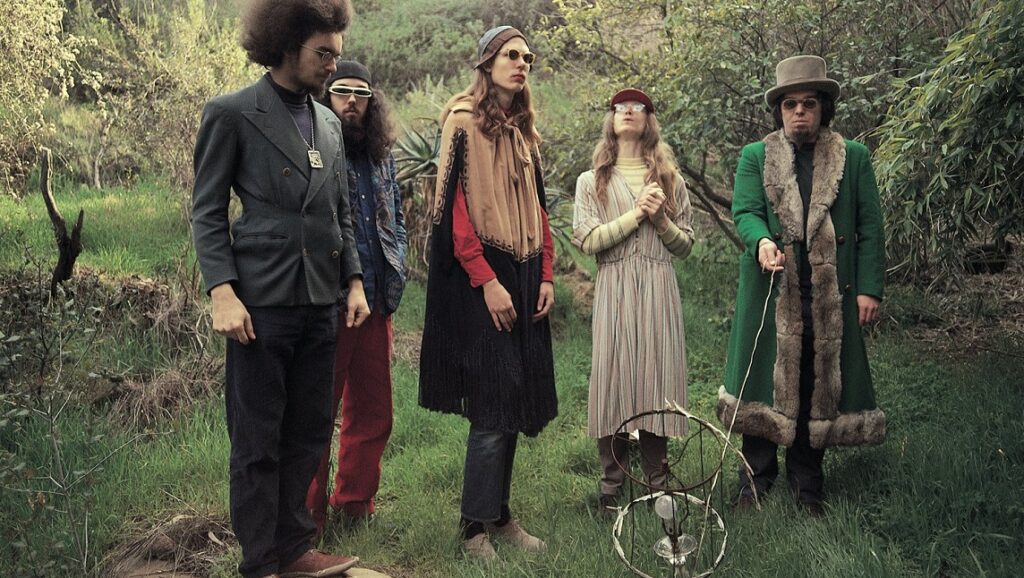There’s no better place to start with demolishing the myth of Captain Beefheart’s ‘inaccessibility’ (and, frankly, many other myths) than Safe as Milk. The man born Don Vliet cut his teeth with former schoolmate Frank Zappa and formed a blues band with another peer, multi-instrumentalist Alex St. Clair, which garnered popularity with teenagers and led to a short stint with the mismatched A&M records — which dropped the group after two singles. A freshly dubbed “Don Van Vliet” then put together a new lineup for his so-called Magic Band, which included St. Clair, along with future translator-arranger John French on drums, and a pilfered Ry Cooder on guitar. What the Magic Band brought as musicians was an essential complement to Vliet’s vocal antics — they diversified the standard blues sound, incorporating rhythms from both American and African devotional music, as well as a certain flourish of psychedelia. Infuse that with “pop” and you get Safe as Milk, Captain Beefheart and the Magic Band’s debut. Of course, the categorization of “pop music” is a loose one, and in this case, few who were part of the popular music audience were accepting of these freak scene Los Angelenos and their takes on genres that weren’t much in vogue at all in 1967. Safe as Milk bombed, and the group continued on, eventually losing themselves in the unconventional jams of the Mirror Man sessions, and sowing the seeds for their opus, Trout Mask Replica. But before freeing the blues to an extent comparable to Mingus on jazz, Beefheart brought dadaism to the more disciplined Safe as Milk.
What the Magic Band brought as musicians was an essential complement to Vliet’s vocal antics — they diversified the standard blues sound, incorporating rhythms from both American and African devotional music, as well as a certain flourish of psychedelia.
From the opening track, “Sure ’Nuff ’n’ Yes I Do,” Cap bastardizes his blues idols, aping Howlin’ Wolf (set to Cooder’s slide guitar) and interpolating Muddy Waters. The “desert” is namechecked as a birthplace, alongside “New Orleans” — a seeming boast of an origin tale. Beneath the blues reverence, though, there’s anarchy and a freak’s sense of humor: “Hey hey hey all you young girls” sings Cap, just digging his burly vocal in. The line forms a couplet about owning a Ferrari, mocking consumerism, and ultimately devolves into the childish verbiage of the song’s title. From here, Safe as Milk seems to go in a million directions; Vliet completely shifts personas, from track to track, most hilariously during the transition from a sweet doo-wop croon on “I’m Glad” to the werewolf-feral “Electricity.” But even within the same track, non-sequiturs abound. “Dropout Boogie” transforms from harsh self-immolation, with a straight rock groove, into a delightful waltz of a breakdown; “Yellow Brick Road” begins as a bright, whimsical shuffle, until French breaks into a tribal rhythm and Cap starts shouting; and never do Zappa and Cap seem more similar than during the wild genre shifts of “Autumn’s Child.” The absurd lyricism of “Abba Zaba” also obviously suggests Zappa’s influence, although missing is that artist’s biting satire; the song is merely an ode to Abba-Zaba taffy bars, a fitting lyrical choice that reminds us of the sincere naïveté that Vliet prizes. Another hallmark of the Beefheart sound (and a greater argument for the music’s accessibility): the certified banger. Every track on Safe as Milk passes that test, but it’s obviously “Electricity” that’s not only a showstopper, but that portended all that Cap and his Magic Band had to offer. Partly terrifying, partly hilarious, and totally madcap — Cap flexes his enormous vocal range and tonal approach, as French’s rhythm competes with both Cooder’s guitar and an out-of-dang-control theremin. Even within the din, Vliet’s vocal stands out, defiantly belonging neither a rhythm nor a key, or maybe just one’s beyond us. The legend that Captain Beefheart was dropped from A&M for this track is fitting, if fabricated; in any case, the madness begins here.
Part of Kicking the Canon – The Album Canon.


Comments are closed.